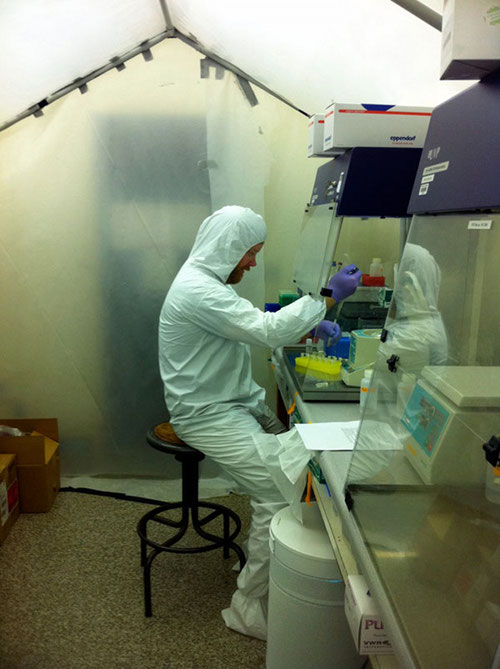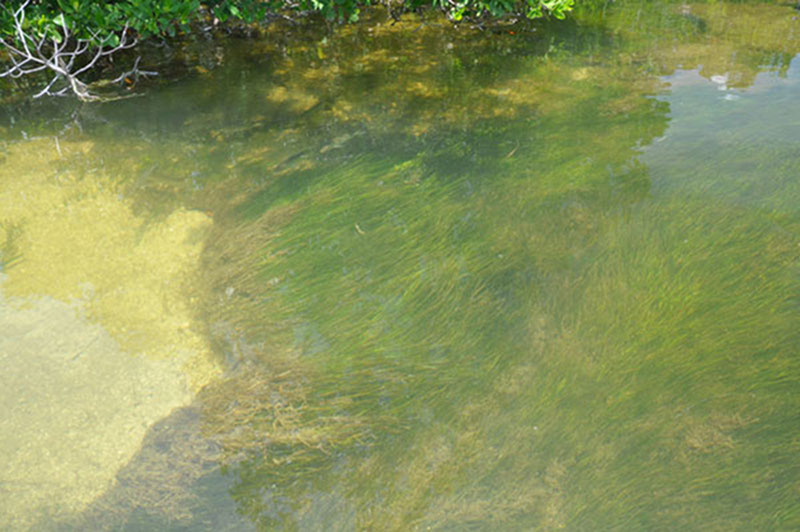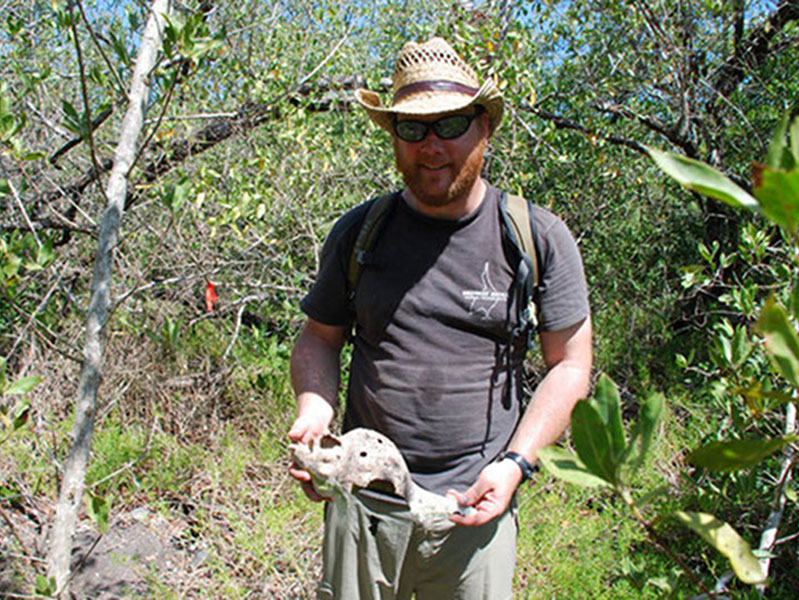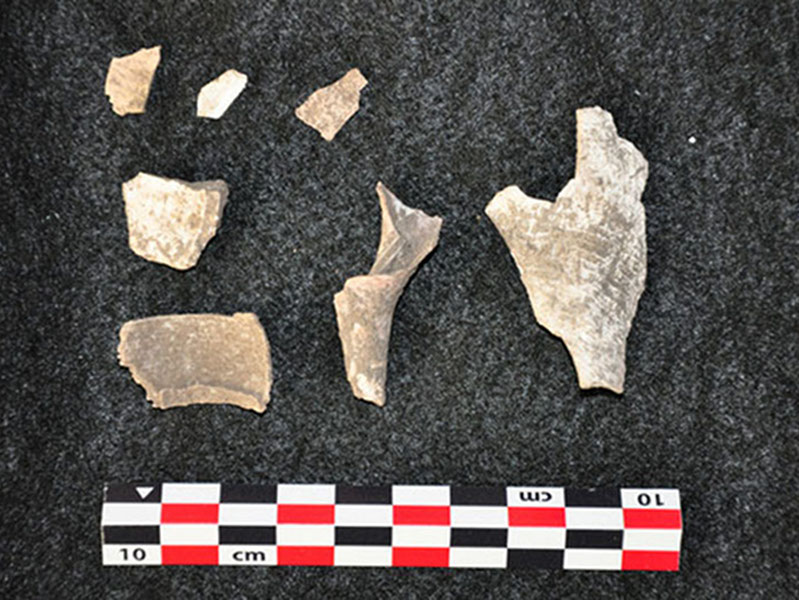
By Derek Smith, PhD Student, Department of Biology - University of Washington
October 3, 2011

Working in a clean environment, Derek Smith carefully attempts to extract ancient DNA from archaeological mollusk samples. Image courtesy of Yvonne Chan; Proyecto Costa Escondida Maritime Maya 2011 Expedition, NOAA-OER. Download larger version (jpg, 468 KB).
As part of my Masters thesis research at the University of Hawaii at Manoa, I learned some of the newest techniques to extract DNA from the tissue of living corals and ‘fingerprint’ individuals using repeating sequences in their genome called microsatellites. Although I had only previously worked on samples collected from living organisms, this project had we wondering if it was possible to extract ancient DNA from archaeological mollusk samples at the Vista Alegre site. After all, an analysis of ancient DNA locked in the shell matrix of those gastropods (snails) could give insights as to where they came from and how they ended up at the site. One of my advisors was instrumental in setting up a special lab on campus where biologists and archaeologists can study ancient DNA trapped in archaeological samples such as rat bones and teeth and fish bones from excavation sites around the Pacific islands. After searching through the current academic literature, I found this has never been done previously on shells of this age or on this kind of archaeological artifact.

Seagrasses are abundant in the waters surrounding Vista Alegre and are a natural nursery for large, mobile gastropods. Image courtesy of Proyecto Costa Escondida Maritime Maya 2011 Expedition, NOAA-OER. Download larger version (jpg, 2.3 MB).
The Maya settled along the coastlines of the Yucatan were foraging in the shallow waters for large, mobile gastropods for use as part of their diet. The seagrasses are a natural nursery for these mollusks, which were likely far more abundant even hundreds of years ago than they are today. The material records of these large, abundant food items are found as discarded shells in middens around the site (a midden is an archaeological term used to describe features containing waste products from daily human activities). Identifying the species found in the middens and comparing them to today’s distribution of these same species, called a biogeographical sketch, may lend clues to where they came from and how they got there. When the snails’ mantle secretes its shell as it grows, proteins containing DNA get trapped in the porous layers of the hardening shell. Although time and the elements may break these proteins down, it may be possible to find specimens still containing trace amounts of these proteins. Extracting ancient DNA from the shells of some of these species will allow for a comparison to current populations that have their DNA catalogued in GenBank (a worldwide genetic database).

Derek Smith holds up one of the many mollusks found in and around middens at Vista Alegre. Further testing, however, will have to be conducted to determine the origin and age of the shell. Image courtesy of Proyecto Costa Escondida Maritime Maya 2011 Expedition, NOAA-OER. Download larger version (jpg, 5.8 MB).

Shell fragments found in excavation units from Vista Alegre. Image courtesy of Proyecto Costa Escondida Maritime Maya 2011 Expedition, NOAA-OER. Download larger version (jpg, 8.7 MB).
Staying in the nearby town of Kantunilkin in between trips to the site, I also had the opportunity to record the distribution and abundance of archaeological mollusk shell specimens in excavation units from the site. The excavation units from the site start out as one cubic meter of soil divided into 10 cm depth intervals. The shell specimens from each 10 cm level are removed from the soil and cleaned so they can be photographed and identified. With a large enough representative sample from around the site, some interesting ecological impacts can be estimated. While only a rough estimate, variables such as foraging pressure changes over time, dietary shifts over time, and snail population growth and decline give us a glimpse into changes over hundreds and even thousands of years around this region.
The ecological information gathered from site in this and in coming years, especially combined with the possible ancient DNA library, will help build an even broader picture of the daily life of the Maya living at Vista Alegre. I for one am looking forward to feeling more connected to the history of this place and its people, even after having only been there for only a short time.